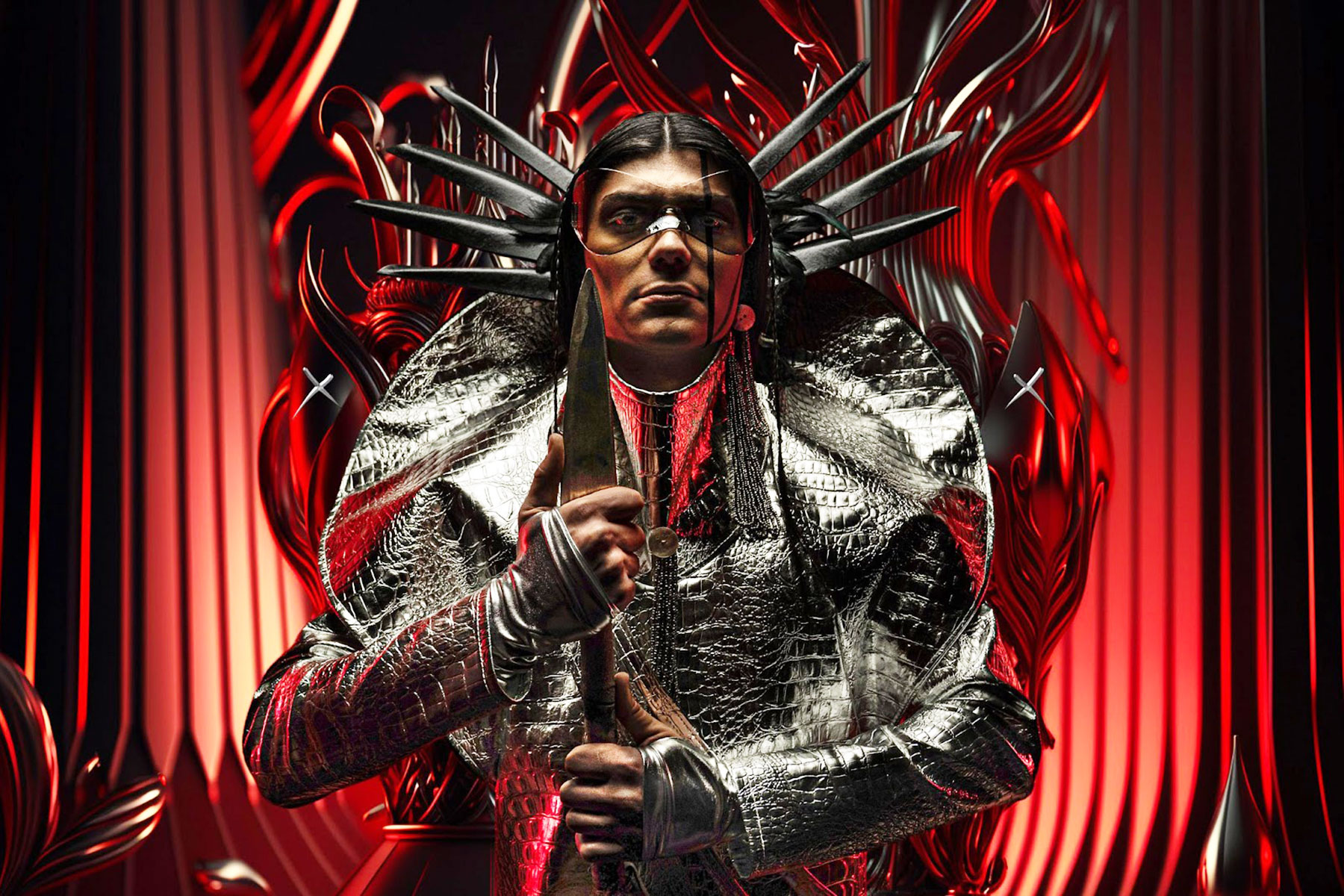History Colorado announces a collaboration with Virgil Ortiz, an award-winning artist and visionary hailing from Cochiti Pueblo, whose works have been displayed at museums around the globe. This partnership will result in the one-of-a-kind exhibition: Virgil Ortiz Revolt 1680/2180: Runners + Gliders which brings Indigenous Futurism to the Mile High City when it opens May 13, 2023, at the History Colorado Center.
Using projection mapping and augmented reality alongside centuries-old Cochiti sculptures and Ancestral Puebloan pottery that dates back a millennium, Virgil Ortiz Revolt 1680/2180: Runners + Gliders bring Ortiz’s stunning visions of the future to life. The result is a dynamic conversation between Ortiz and his artistic ancestors that spans centuries—and leaves you with new perspectives on what lies ahead.
“Runners + Gliders is the most artistically adventurous thing we have ever done at History Colorado,” said Jeremy Morton, Public Engagement Manager at History Colorado. “It provides us an opportunity to think about time and history differently, to look back into the past, and forward into the future, in a way few history museums have ever tried.”
Drawing inspiration from historical accounts of the most successful Indigenous uprising against a colonizing power in North America, the 1680 Pueblo Revolt, Virgil Ortiz Revolt 1680/2180: Runners + Gliders spotlights themes of justice and resistance to oppression. Additionally, it reimagines Puebloan time through Indigenous Futurism, science fiction, and fantasy blending the past, present and future into an immersive artistic experience.
Virgil Ortiz Revolt 1680/2180: Runners + Gliders transports viewers to the year 2180 and introduces Ortiz’s newest characters in the artist’s long-developing “Revolt” storyline: Runners + Gliders. These characters are inspired by the historic figures Omtua and Catua who were integral in the success of the 1680 uprising
Serving as messengers during the 1680 rebellion, Omtua and Catua delivered knotted cords made of deer hide which served as coded messages to the Pueblos of what is now New Mexico. The leaders of each Pueblo were instructed to untie one knot on the cord every morning and when the final knot was undone the Pueblos were to revolt simultaneously.
Although Ortiz works in many mediums, he is best known as a ceramicist from a long line of Puebloan potters, and this is on full display in Virgil Ortiz Revolt 1680/2180: Runners + Gliders.
“Clay is the core of all my creations,” Ortiz said. “My work centers on preserving traditional Cochiti culture and art forms. It’s important to recognize that Pueblo communities are very much alive and have a level of vitality that speaks to generations of strength, persistence, brilliance, and thriving energy.”
In celebration of this exhibition’s opening, the History Colorado Center is hosting an opening reception on May 18 from 6 – 8 p.m. This reception includes light refreshments, a cash bar, and remarks from Ortiz and Dawn DiPrince, executive director of History Colorado. While this event is free and open to the public, RSVP is required.

